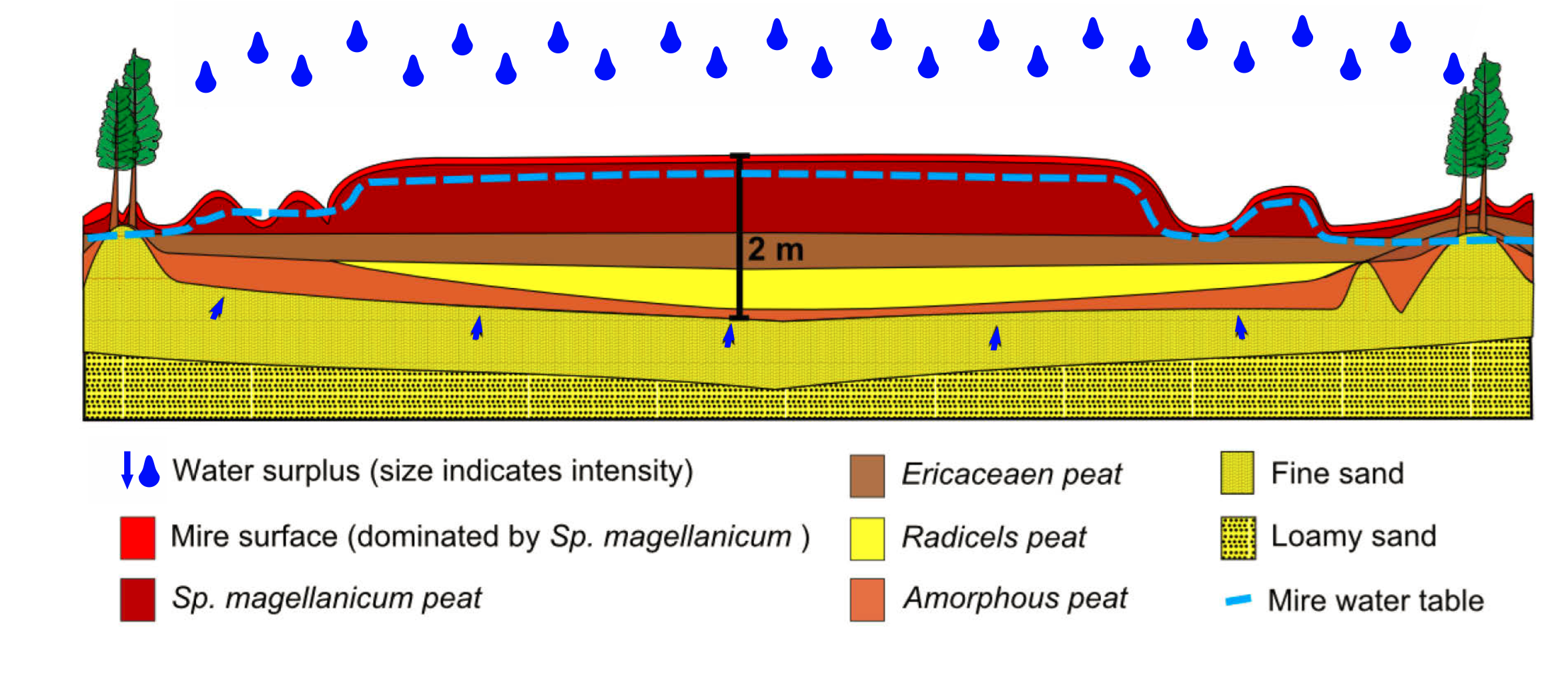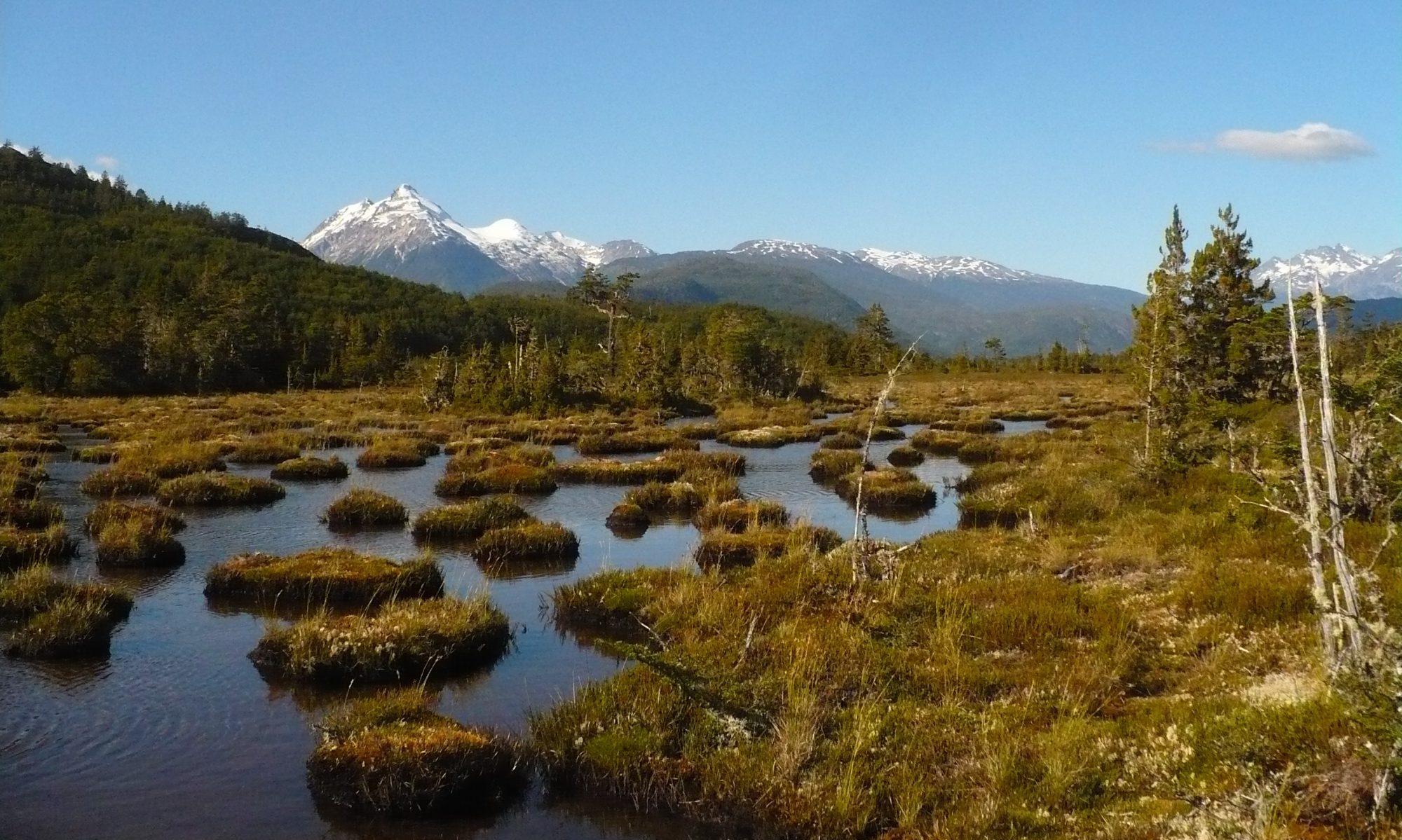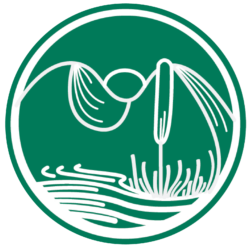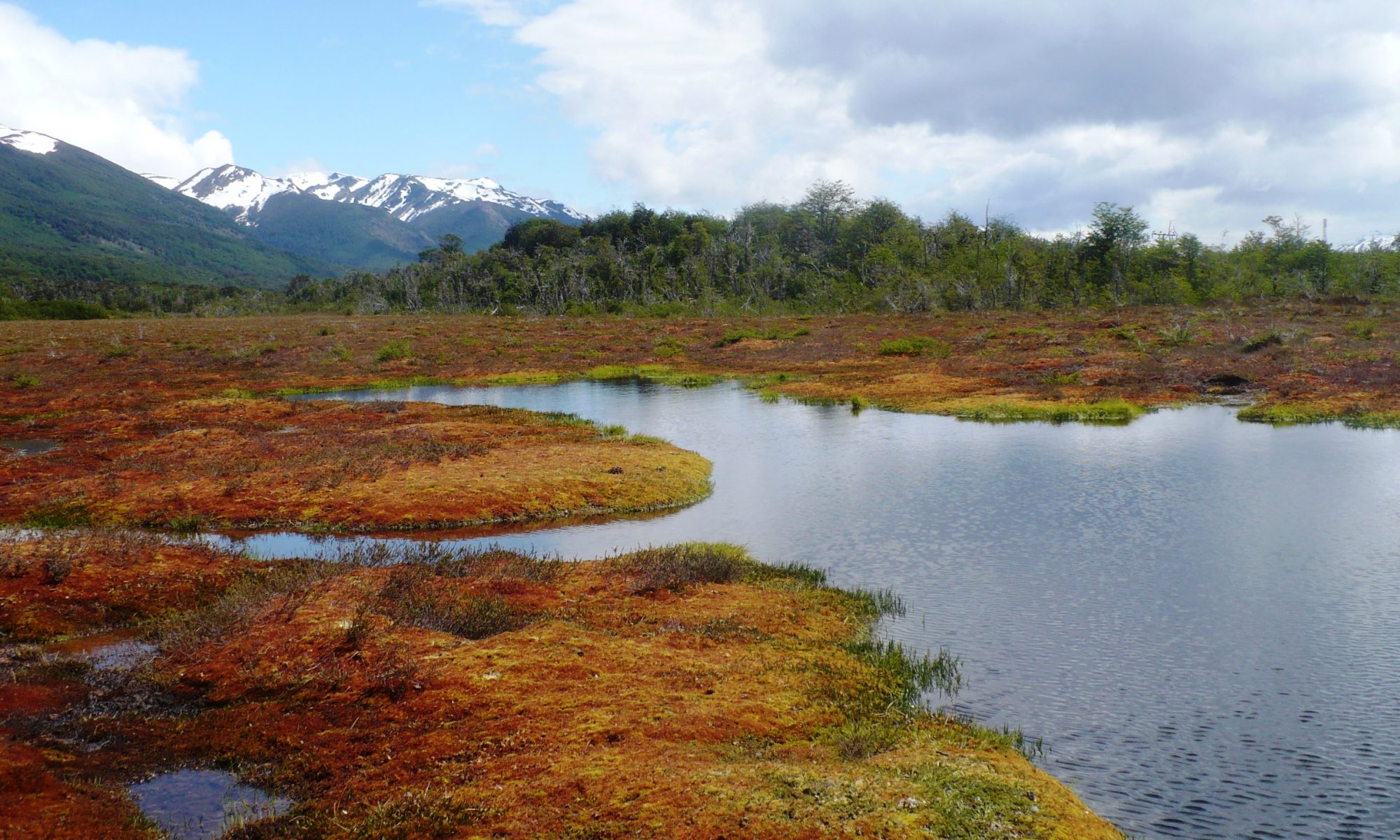Raised bogs are widely reported in rainy regions of the world (Cowenberg et al., 2005; Fritz, 2012; Mc Donald, 2009). These are ecosystems with a domed morphology which rises significantly above the landscape average level. These mires form in areas where rainfall exceeds the drainage and evapo-transpiration of the soil and they are fed exclusively by rain, being ombrogenic ecosystems. Despite this, raised bogs have a geogenic origin in Aysén, since most of them were detected growing above relic geogenic peaty horizons formed under paludification or terrestrialization. In other words, raised bogs are secondary ecosystems. In Chile, raised bogs dominated by Sphagnum magellanicum mosses are present in Chile from the Region of the Rivers (39º16′ S) until the Navarino Island (55° 11′ S) in the Region of Magallanes.
Current vegetation
In coastal areas raised bogs are present in patches or are totally displaced by cushion plants species like Astelia pumila and Donatia fascicularis, forming blanket bogs. Particularly Astelia pumila and Donatia fascicularis species find specific habitats to develop above Sphagnum mires in coastal areas, forming patches and extending in circumference until they displace the previously dominating mosses. Also the water level can drive ecologic variations in raised bogs. In continental areas with high precipitation ponds and small pools of rain water accumulate. There, raised bogs can form hummocks composed of Sphagnum magellanicum mosses and the Juncaginaceae Tetroncium magellanicum has been reported reaching up to 150 cm in height in the Region of Aysén (Chilean Patagonia, see Rodriguez, 2015). In continental areas with high precipitation, where the peat layer is still shallow enough to allow trees to grow, the sphagnum layer vegetation develops hummocks that cover the lower trunks of cypress trees, forming forest-covered hummock landscapes. So, the current peat forming vegetation has a limited diversity in raised bogs, with merely a few main species Sphagnum magellanicum, Pilgerodendron uviferum, Tetroncium magellanicum, Carex magellanica, Sphagnum fimbriatum, Pernettya mucronata and Marsippospermum grandiflorum.
Hydrology
Raised bogs are fed exclusively by rain water. The peat formation takes place independently from the mire water table. This can experiment extreme variations. A simplified and stereotypical schema of a raised bog is shown as follows:

Substrate Types and Stratigraphy
In the Chilean Patagonia, raised bogs can reach depths of 500 cm presenting emblematic wide horizons of ombrogenic peat (formed in a mire fed by rainwater) above horizons of geogenic peat (formed in a mire fed by mineralized water), over loamy and fine sand parent materials. Raised bogs present typical substrate types, being the most common ombrogenic types Sphagnum magellanicum peat, Ericaceae peat, cushion plants peat, Oreobolus peat and cypress wood peat. The most common geogenic peat types in raised bogs are amorphous peat, radicels peat, Sp. fimbriatum peat, brown moss peat and Schoenoplectus peat. The amorphous peat, as was explained in the “Mire Substrate Sheets” is a typical indicator of water fluctuation and dry periods occurring in the mire. When the mire has its origin in a terrestrialization ecosystem, the substrate organic gyttja can be found. The majority of non-amorphous peat substrates in raised bogs are very low to low decomposed (H3-H4). Raised bogs present a median pH-value of 4.0±0.6, covering a spectrum of 2.9 to 6.1 for mires examined in the Chilean Patagonia, and decreasing significantly on the surface due to the action of Sphagnum magellanicum mosses.
References:
Couwenberg, J.; Augustin, J.; Michaelis, D.; Wichtmann, W.; Joosten, H. (2008): Entwicklung von Grundsätzen für eine Bewertung von Niedermooren hinsichtlich ihrer Klimarelevanz. Edited by Institut für Dauerhaft Umweltgerechte Entwicklung von Naturräumen der Erde (DUENE) e.V., Institut für Botanik und Landschaftsökologie der Universität Greifswald. Greifswald-Germany, 33 pp. Available online at http://duene-greifswald.de/doc/gest.pdf, checked on 2/1/2014.
Fritz, Christian (2012): Limits of sphagnum bog growth in the New World. Biogeochemistry and ecohydrology of peatlands in South America and New Zealand. PDF at Radboud Repository of the Radboud University Nijmegen, 199 pp.
Mc Donald, T. (2009): Sphagnum bog mapping and recovery plan. ACT climate change strategy plan 2007-2011. Project report – action 35. (Technical report / Research and Planning, Parks Conservation and Lands, 20). Edited by Canberra City, A.C.T.: Territory and Municipal Services, 21 pp.
Rodríguez, A. C. (2015): Hydrogeomorphic classification of mire ecosystems within the Baker and Pascua Basins in the Region Aysén, Chilean Patagonia: a tool for their assessment and monitoring. Berlin-Germany: Humboldt Universität zu Berlin, 292 pp.


